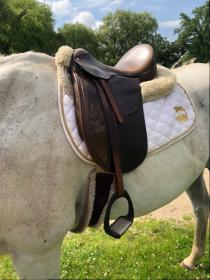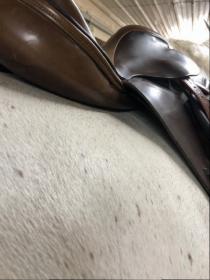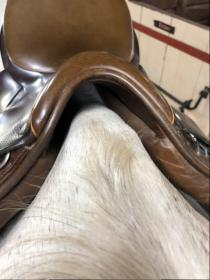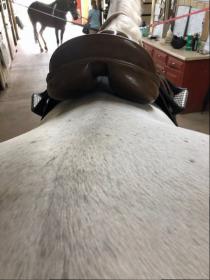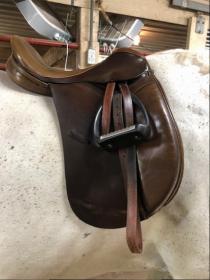I currently ride my OTTB in a county stabilizer but have been wanting a dressage saddle for a while. I’ve been keeping my eyes peeled for a used county in a Narrow tree with skid row panels (his stabilizer setup). A fellow boarder is looking for a new saddle and had a few at the barn she was trying and I threw them on my guy just to see.
Turns out an older Crosby Prix St. George fit him pretty well (good wither clearance on his shark fin withers and no bridging, balanced from front to back) and is understandably much more affordable than a county… its also brown (my preference).
I rode him in it and he felt good and I really liked how I felt in it and liked that its pretty basic for a dressage saddle (not a ton of padding, blocks etc.). The only negative thing I noticed is that he didn’t sweat evenly in it at all. To be fair he doesnt sweat evenly in his county either… usually not a ton of sweat marks on either side of his withers. In the Crosby he didn’t sweat along the top of his back/spine. I read a review from 2008 on the Chronicle forum that the Crosby’s Prx St. George have a really narrow channel and am wondering if this could be an issue.
I’ve never known how important it is that they sweat evenly? I rode him in the crosby with a thinline sheepskin pad and am thinking I’ll try riding him without it in the Crosby and see if there is a difference. Would love to hear anyones input. There aren’t many saddle fitters in my area that aren’t repping specific brands so not sure if I could get someone out in reasonable time frame to check the fit.


